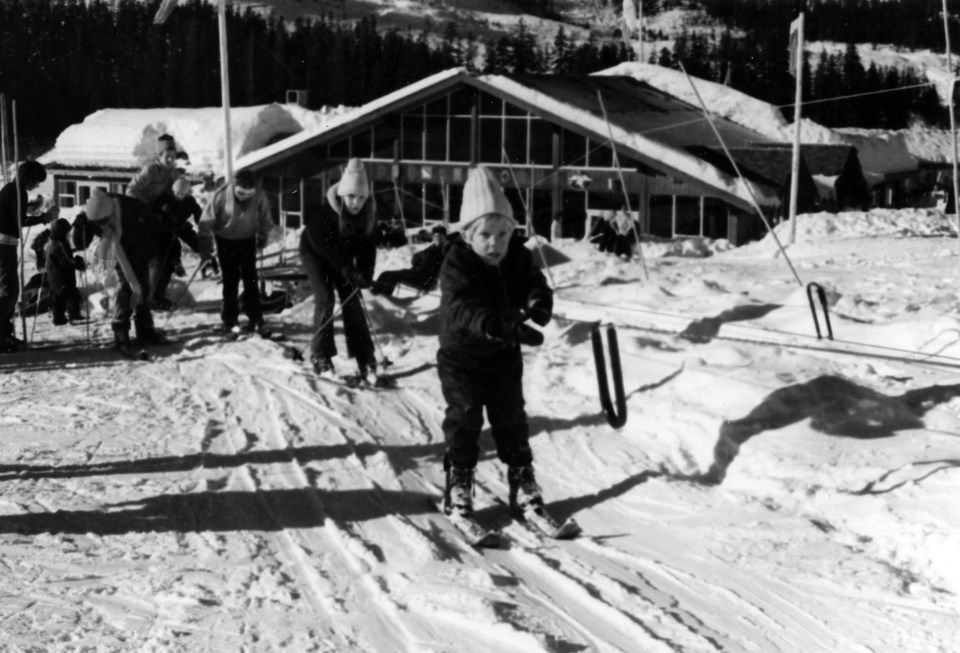Though often overshadowed by new gondolas, colourful chairlifts, and T-bars that open up exciting new terrain, rope tows are an important part of the history of skiing in Whistler. Requiring no towers, rope tows can be relatively easy and inexpensive to build and move around, and have often been used to service small hills and slopes for beginners. The first ski lift operated in the Whistler Valley was a rope tow built by Dick Fairhurst in 1960 using an old Ford V8 motor under the power lines along Alta Lake Road, where the Fairhursts owned Cypress Lodge. Rope tows were also used by the Rainbow Ski Area, Blackcomb Mountain, and Whistler Mountain.
During Whistler Mountain’s early seasons, rope tows were also essential to providing beginner terrain but, because they often moved around, they were not included on trail maps, and can be hard to trace today. In a small, one-paragraph article in November 1967, Garibaldi’s Whistler News announced the installation of a new beginner lift on Whistler Mountain, a 900-foot surface-cable lift manufactured by Mighty-Mite near the upper terminal of the Blue Chair. Not finding any other info in our records, we asked around, and were able to find out more about this lift, including its role in selling season passes (thank you to Lynn Mathews, Renate Bareham and Hugh Smythe for your help!).
The Mighty-Mite lift was installed for the 1967-68 season, the second full season of operations on Whistler Mountain. According to Mathews, the lift company faced two difficulties: a limited budget for building runs and lifts over the summer, and limited beginner terrain except for at the gondola base in the valley. At the time, Whistler Mountain would open on weekends as soon as there was enough snow in the alpine, but no snow in the valley meant that beginner skiers would “stand in the area around the top of the Red Chair not knowing what to do or where to go.” To alleviate this problem, the Mighty-Mite was installed around what is now the top of the Emerald Express and the Whistler terminal of the Peak 2 Peak Gondola. Beginners could easily ski from there to the Roundhouse, and were able to download via the Red Chair and gondola. When there was more snow in the valley, the Mighty-Mite was moved down to the beginner terrain at the gondola base.
In late October and into November, the Mighty-Mite was used by Jim McConkey and the ski school to assess and train instructors for the coming season. The Mighty-Mite was also used to entice skiers to buy season passes. As Mathews recalled, the lift company needed to sell season passes in the fall in order to fund the winter operations, and so the Mighty-Mite was installed at the top of the Red Chair very early one season and the lift company took photos of people skiing at the top of Whistler Mountain. These photos were used to advertise early season skiing in newspapers in Vancouver and Seattle. People were encouraged to “buy early, ski early” and ski enough by New Year’s Day to pay off their ski pass. The campaign worked, and hundreds of people bought their season passes.
The Mighty-Mite continued to be used at the top and bottom of Whistler Mountain into the 1970s until it was replaced by a Harusch Handle Tow manufactured in Squamish. Over the next decades, various forms of rope tows could be found on both Whistler and Blackcomb mountains, but beginner terrain is more likely to be serviced by a magic carpet today, and rope tows have become much harder to spot in the Whistler area.




